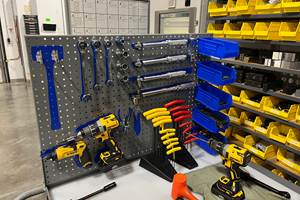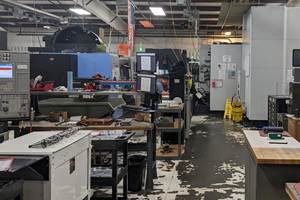Are U.S. Machine Shops Choosing to Stay Small for the Long Haul?
Spending plans offer a clue to the new way shops plan to expand their output.
Share



Takumi USA
Featured Content
View More


Hwacheon Machinery America, Inc.
Featured Content
View More



Earlier this year, I had the chance to speak to an audience in Europe about metalworking in the United States. The point I felt it most important to make to this group was also the simplest to express. Namely, in the United States, metalworking is done in facilities that are small. Small in staffing, that is. Metalworking is distinct from the rest of U.S. manufacturing in the extent to which this is true. With the findings of our latest Capital Spending Survey, we might be seeing what comes next for those small shops: They are choosing to stay small, or else accepting they must stay small, and they are setting out to realize a different sort of bigness.
Specifically, we have found that these shops plan to invest in capability—horizontal machining centers in particular—that will let them expand their machining output without adding staff. Steven Kline of Gardner Business Intelligence (a division of the company that publishes this magazine) reports on this finding in his article, “The Shift to Horizontal Machining Centers Gathers Steam.”
Let me offer some data behind my point that metalworking is done in small shops. According to the U.S. Census Bureau, 83 percent of metalworking facilities have fewer than 20 employees. The proportion for manufacturing overall is 71 percent. That may seem like a slight difference, but when it comes to value added, the extent of the discrepancy expands. Shops smaller than 20 employees account for 26 percent of the metalworking value-added in the United States. These facilities account for 5 percent of value added in manufacturing broadly. Raise the scale to facilities with less than 50 employees, and this group makes up 53 percent of metalworking value-added versus 12 percent for manufacturing overall.
Perhaps most germane to this discussion is capital investment. Shops with fewer than 50 employees account for 60 percent of U.S. investment in metalworking technology. Small shops thus drive metalworking technology investment. The coming spending on HMCs is rising because small shops are shifting toward buying them. And their very smallness would seem to offer the most likely reason for the shift.
In the past, small shops would be expected to spend more of their limited resources on vertical machining centers, essentially getting more spindles per dollar. However, the one requirement of this approach is the need to increase skilled staffing at a rate in step with VMC purchases. Now, thanks to the difficulty many shops face in finding skilled personnel, combined with the rewards some have found in maintaining a small and highly focused staff, shops are either discouraged or disinclined to seek more employees. Instead, the investment is going instead into the kind of capital that can enable longer unattended operation, including increased use of the evening and weekend hours that likely have no staff at all.
In short, this simple fact about U.S. metalworking now seems coupled with a straightforward clue about what is to come. Namely, shops are finding the way to deliver high value despite their smallness, equipping and preparing themselves to achieve high productive capacity with few people. In the future, we might need to change our very definitions of what constitutes a shop that is small.
Related Content
Translating a Prototyping Mindset to Production
The experimental mindset that benefited BDE Manufacturing Technologies as a prototype job shop has given it an adaptable edge as a production facility.
Read MoreWeingärtner Maschinenbau HMC Provides Stable Machining
The MPMC features a wide base, optimized guide ratio and configuration of the guideways to provide stability and prevent vibration during operation, even under extreme cutting conditions.
Read MoreShop Replaces Two Verticals With One Horizontal
By trading two VMCs in to help finance the purchase of a new HMC, this shop was able to significantly increase production and move to lights-out machining.
Read MoreShop “Dims the Lights” With Pallets and More
Adding pallet systems brought Mach Machine success and additional productivity. The shop has since furthered its automation goals while adding new capabilities.
Read MoreRead Next
Building Out a Foundation for Student Machinists
Autodesk and Haas have teamed up to produce an introductory course for students that covers the basics of CAD, CAM and CNC while providing them with a portfolio part.
Read More5 Rules of Thumb for Buying CNC Machine Tools
Use these tips to carefully plan your machine tool purchases and to avoid regretting your decision later.
Read MoreRegistration Now Open for the Precision Machining Technology Show (PMTS) 2025
The precision machining industry’s premier event returns to Cleveland, OH, April 1-3.
Read More































.jpg;maxWidth=300;quality=90)












